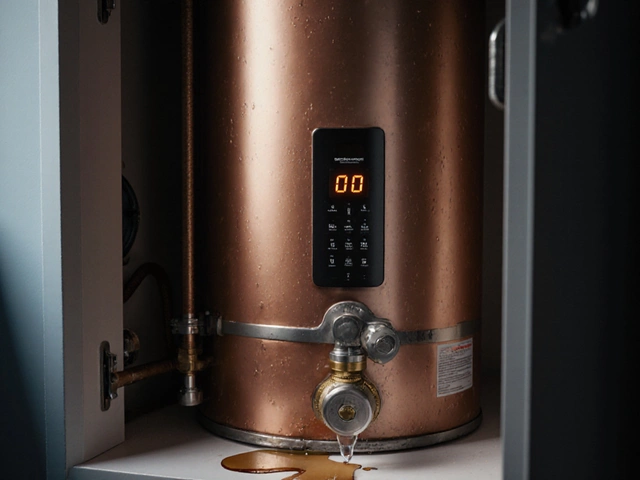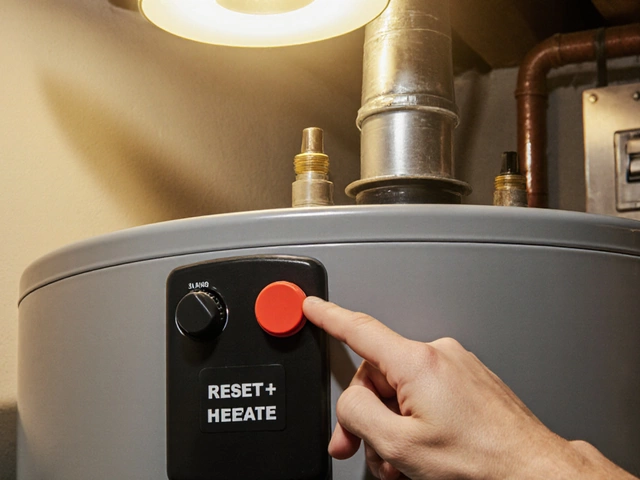If your electric oven is taking forever to heat up, showing strange error codes, or you’ve spotted a burnt smell, it might be time to think about a replacement. Ignoring these signs can lead to higher electricity bills and ruined meals. Below we break down the key reasons to replace, the choices between DIY and hiring a pro, and the typical costs you’ll face.
First, check the heating element. A faulty element often causes a cold oven, and swapping it is cheap – usually under £30 for the part. If you’ve already tried that (see our post on oven element replacement) and the oven still won’t get hot, look at the thermostat. A thermostat that constantly reads low will keep the oven from reaching set temperatures.
Next, consider the age of the appliance. Most electric ovens last about 12‑15 years with regular maintenance. If yours is older than that and you’ve needed multiple repairs, the cumulative cost may outweigh buying a new unit. Also, older ovens are less energy‑efficient, meaning they’ll cost you more to run every year.
Finally, inspect the door seal. A cracked or worn seal lets heat escape, making baking uneven and driving up energy use. Seals are replaceable, but if the door frame itself is warped, you’re looking at a bigger issue that often signals the whole oven is past its prime.
Replacing an electric oven yourself is doable if you’re comfortable working with basic tools and have a clear step‑by‑step guide. You’ll need a screwdriver set, a multimeter, and perhaps a new heating element or thermostat. Turn off the power at the circuit breaker, remove the oven from its cabinet, and disconnect the wiring. Follow the manufacturer’s wiring diagram – it’s usually a simple three‑wire connection.
Pros of DIY: you save on labour fees (which can be £80‑£150 for a qualified engineer), you learn how the oven works, and you can finish the job on your own schedule. Cons: if you make a wiring mistake, you risk a short circuit, blown fuse, or even fire. Mistakes also void any remaining warranty on a new unit.
If you opt for a professional, the average total cost in the UK ranges from £250 to £500, depending on the model and any extra work like adjusting cabinet fit‑outs. A qualified electrician can also check your home’s electrical load to ensure the new oven won’t overload the circuit – a step many DIYers skip.
When budgeting, factor in the price of the new oven itself. Mid‑range electric ovens sit around £400‑£600, while premium models with convection fans or smart features can reach £1,000 or more. Add delivery (often free) and installation – that’s where the professional fee comes in.
In short, if the oven is under ten years old, you’ve only needed one minor repair, and you feel confident with basic electrical work, DIY replacement can save you money. If the unit is older, has multiple faults, or you’re unsure about handling live wires, call a certified engineer.
Whatever route you choose, remember to test the oven after installation. Run it empty at 180°C for 15‑20 minutes to confirm it heats evenly and the door seals properly. If you notice any odd noises or uneven heating, call a professional right away – better safe than sorry.
Replacing an electric oven doesn’t have to be stressful. Identify the symptoms, weigh the costs, and decide whether a DIY fix or a pro installation fits your budget and skill level. A well‑chosen oven will serve you reliably for years, keeping meals on the table and your energy bill in check.

Thinking about swapping out your electric oven? This article covers how tough the job really is, where people usually get stuck, and what you actually need to know. We break down what tools you really need, what pitfalls you can avoid, and when you should probably call someone who’s done it before. Get ready for straight talk—no tech jargon, just real advice for regular folks. Whether you DIY or call a pro, you’ll walk away ready to make a smart decision.

Resetting a freezer compressor may sound daunting, but it's an essential skill for maintaining your appliance's efficiency. Compressors can occasionally need a reset to function properly, potentially saving you from costly repairs or replacements. This article walks you through the steps to safely reset your freezer compressor and offers tips to prevent future issues. Understanding when and why to reset your compressor can keep your freezer running smoothly and extend its lifespan.

Spot the top warning signs of a failing hot water heater, from strange noises and leaks to temperature swings and error codes, plus practical fixes and when to call a pro.

If your freezer isn't doing its one job—keeping things cold—you're in a pickle. But before you start shopping for a new one, there are a few things you might try to get it back to work. From checking the power source to cleaning coils, fixing cooling problems can often be simple and straightforward. Let's explore some potential solutions to get your freezer chilling again.

Learn how to safely reset both electric and gas hot water heaters, troubleshoot common issues, and know when to call a professional.

Deciding between repairing and replacing a freezer can be tricky. This article guides you through evaluating repair costs, expected lifespan, and energy efficiency before making a decision. It provides practical advice to help you make an economical choice, whether to fix or replace your freezer. Learn important factors to consider, like repair frequency and environmental impact, to ensure you spend wisely.